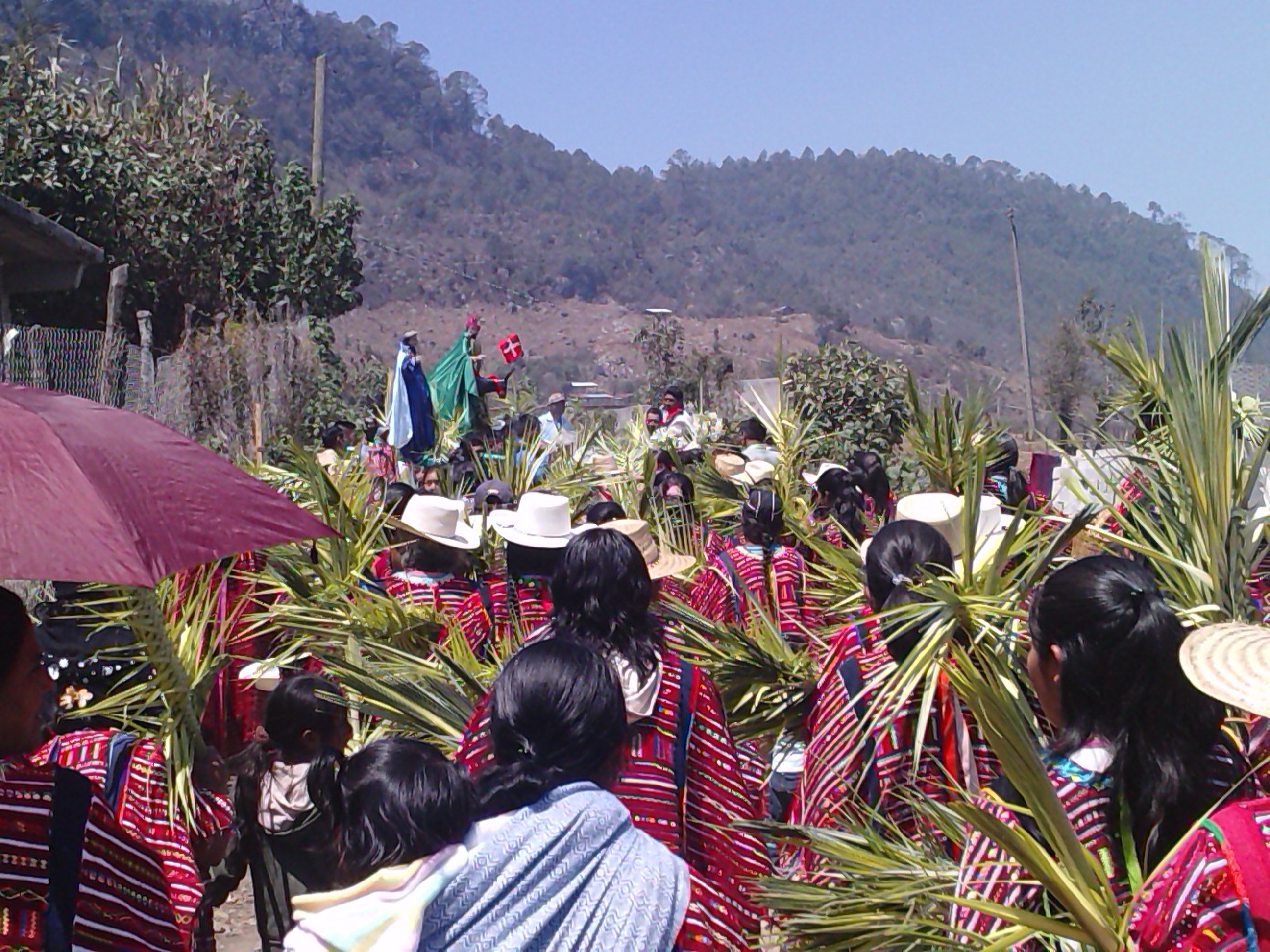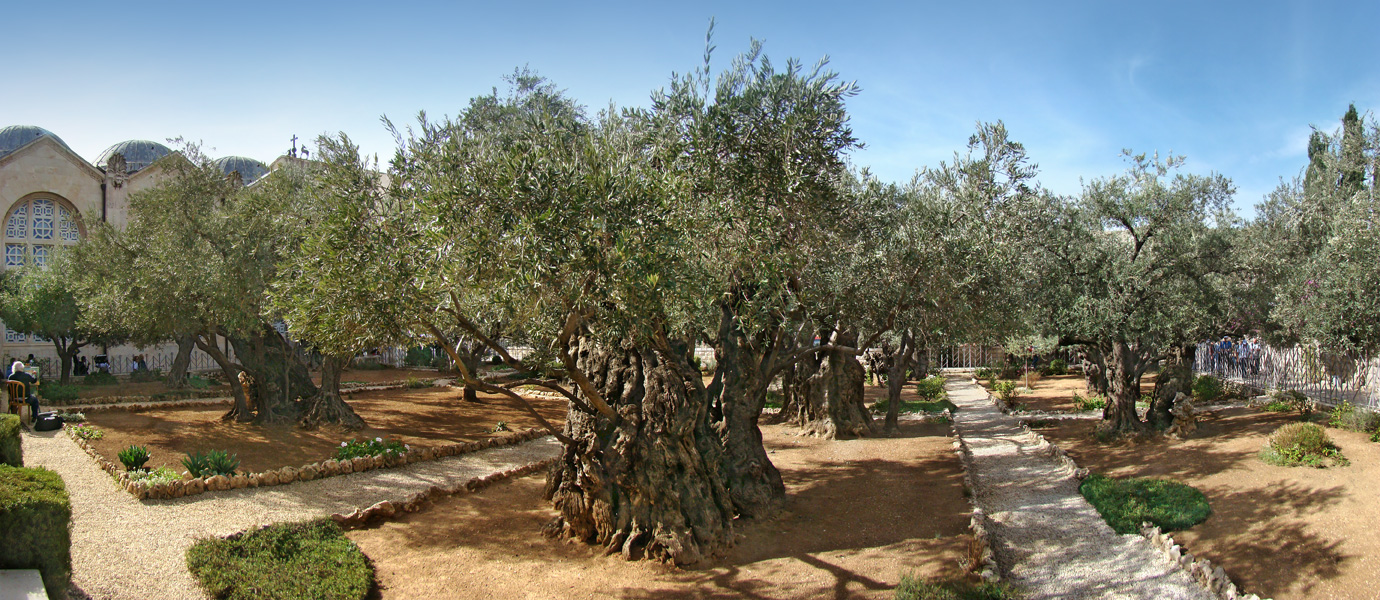|
Holy Week In Taxco
In Taxco, the processions and ceremonies of Holy Week are elaborate and have gained international fame. Between Palm Sunday and Easter Sunday, there are ten major processions, six during the evening and four during the day. Most processions are about two and a half kilometers long and take about two hours to complete. These commemorations date back to at least 1622 when they were begun in the atrium of the Church of the Ex monastery of San Bernardino de Siena. Now these processions and ceremonies center of the Santa Prisca Church. They begin on Palm Sunday, when vendors, mostly from the small outlying village of Tlamacazapa, crowd around the church to sell palm leaves woven into intricate designs. Most designs are variations of a crucified Christ but there are others, like floral designs, as well. A wooden carving of Christ on a donkey leaves another outlying village, Tehuilotepec, and marches into Taxco to arrive to the Santa Prisca Church with much fanfare. The first sign of ... [...More Info...] [...Related Items...] OR: [Wikipedia] [Google] [Baidu] |
Taxco
Taxco de Alarcón (; usually referred to as simply Taxco) is a small city and administrative center of Taxco de Alarcón Municipality located in the Mexican state of Guerrero. Taxco is located in the north-central part of the state, from the city of Iguala, from the state capital of Chilpancingo and southwest of Mexico City. The city is heavily associated with silver, both with the mining of it and other metals and for the crafting of it into jewelry, silverware and other items. Today, mining is no longer a mainstay of the city's economy. The city's reputation for silverwork, along with its picturesque homes and surrounding landscapes, have made tourism the main economic activity. History The name Taxco is most likely derived from the Nahuatl place name ''Tlachco'', which means "place of the ballgame". However, one interpretation has the name coming from the word ''tatzco'' which means "where the father of the water is," due to the high waterfall near the town center on Atat ... [...More Info...] [...Related Items...] OR: [Wikipedia] [Google] [Baidu] |
Holy Week In Mexico
Holy Week in Mexico is an important religious observance as well as important vacation period. It is preceded by several observances such as Lent and Carnival, as well as an observance of a day dedicated to the Virgin of the Sorrows, as well as a Mass marking the abandonment of Jesus by the disciples. Holy Week proper begins on Palm Sunday, with the palms used on this day often woven into intricate designs. In many places processions, Masses and other observances can happen all week, but are most common on , Good Friday, Holy Saturday and Easter Sunday, with just about every community marking the crucifixion of Jesus in some way on Good Friday. Holy Saturday is marked by the Burning of Judas, especially in the center and south of the country, with Easter Sunday usually marked by a Mass as well as the ringing of church bells. Mexico's Holy Week traditions are mostly based on those from Spain, brought over with the Spanish conquest of the Aztec Empire, but observances have developed v ... [...More Info...] [...Related Items...] OR: [Wikipedia] [Google] [Baidu] |
Palm Sunday
Palm Sunday is a Christian moveable feast that falls on the Sunday before Easter. The feast commemorates Christ's triumphal entry into Jerusalem, an event mentioned in each of the four canonical Gospels. Palm Sunday marks the first day of Holy Week. For adherents of mainstream Christianity, it is the last week of the Christian solemn season of Lent that precedes the arrival of Eastertide. In most liturgical churches, Palm Sunday is celebrated by the blessing and distribution of palm branches (or the branches of other native trees), representing the palm branches which the crowd scattered in front of Christ as he rode into Jerusalem; these palms are sometimes woven into crosses. The difficulty of procuring palms in unfavorable climates led to their substitution with branches of native trees, including box, olive, willow, and yew. The Sunday was often named after these substitute trees, as in Yew Sunday, or by the general term Branch Sunday. In Syriac Christianity it is often c ... [...More Info...] [...Related Items...] OR: [Wikipedia] [Google] [Baidu] |
Easter Sunday
Easter,Traditional names for the feast in English are "Easter Day", as in the ''Book of Common Prayer''; "Easter Sunday", used by James Ussher''The Whole Works of the Most Rev. James Ussher, Volume 4'') and Samuel Pepys''The Diary of Samuel Pepys, Volume 2'') as well as the single word "Easter" in books printed i157515841586 also called Pascha (Aramaic, Greek, Latin) or Resurrection Sunday, is a Christian festival and cultural holiday commemorating the resurrection of Jesus from the dead, described in the New Testament as having occurred on the third day of his burial following his crucifixion by the Romans at Calvary . It is the culmination of the Passion of Jesus Christ, preceded by Lent (or Great Lent), a 40-day period of fasting, prayer, and penance. Easter-observing Christians commonly refer to the week before Easter as Holy Week, which in Western Christianity begins on Palm Sunday (marking the entrance of Jesus in Jerusalem), includes Spy Wednesday (on which the b ... [...More Info...] [...Related Items...] OR: [Wikipedia] [Google] [Baidu] |
Good Friday
Good Friday is a Christian holiday commemorating the crucifixion of Jesus and his death at Calvary. It is observed during Holy Week as part of the Paschal Triduum. It is also known as Holy Friday, Great Friday, Great and Holy Friday (also Holy and Great Friday), and Black Friday. Members of many Christian denominations, including the Catholic, Eastern Orthodox, Lutheran, Anglican, Methodist, Oriental Orthodox, United Protestant and some Reformed traditions (including certain Continental Reformed, Presbyterian and Congregationalist churches), observe Good Friday with fasting and church services. In many Catholic, Lutheran, Anglican and Methodist churches, the Service of the Great Three Hours' Agony is held from noon until 3 pm, the time duration that the Bible records as darkness covering the land to Jesus' sacrificial death on the cross. Communicants of the Moravian Church have a Good Friday tradition of cleaning gravestones in Moravian cemeteries. The date of Good Fr ... [...More Info...] [...Related Items...] OR: [Wikipedia] [Google] [Baidu] |
Blackberry
The blackberry is an edible fruit produced by many species in the genus ''Rubus'' in the family Rosaceae, hybrids among these species within the subgenus ''Rubus'', and hybrids between the subgenera ''Rubus'' and ''Idaeobatus''. The taxonomy of blackberries has historically been confused because of hybridization and apomixis, so that species have often been grouped together and called species aggregates. For example, the entire subgenus ''Rubus'' has been called the ''Rubus fruticosus'' aggregate, although the species ''R. fruticosus'' is considered a synonym of '' R. plicatus''. ''Rubus armeniacus'' ("Himalayan" blackberry) is considered a noxious weed and invasive species in many regions of the Pacific Northwest of Canada and the United States, where it grows out of control in urban and suburban parks and woodlands. Description What distinguishes the blackberry from its raspberry relatives is whether or not the torus ( receptacle or stem) "picks with" (i.e., stays with) th ... [...More Info...] [...Related Items...] OR: [Wikipedia] [Google] [Baidu] |
Rosary
The Rosary (; la, , in the sense of "crown of roses" or "garland of roses"), also known as the Dominican Rosary, or simply the Rosary, refers to a set of prayers used primarily in the Catholic Church, and to the physical string of knots or beads used to count the component prayers. When referring to the prayer, the word is usually capitalized ("the Rosary", as is customary for other names of prayers, such as "the Lord's Prayer", and "the Hail Mary"); when referring to the prayer beads as an object, it is written with a lower-case initial letter (e.g. "a rosary bead"). The prayers that compose the Rosary are arranged in sets of ten Hail Marys, called "decades". Each decade is preceded by one Lord's Prayer ("Our Father"), and traditionally followed by one Glory Be. Some Catholics also recite the " O my Jesus" prayer after the Glory Be; it is the most well-known of the seven Fátima prayers that appeared in the early 20th century. Rosary prayer beads are an aid for saying these ... [...More Info...] [...Related Items...] OR: [Wikipedia] [Google] [Baidu] |
Maundy Thursday
Maundy Thursday or Holy Thursday (also known as Great and Holy Thursday, Holy and Great Thursday, Covenant Thursday, Sheer Thursday, and Thursday of Mysteries, among other names) is the day during Holy Week that commemorates the Washing of the Feet (Maundy) and Last Supper of Jesus Christ with the Apostles, as described in the canonical gospels. It is the fifth day of Holy Week, preceded by Holy Wednesday and followed by Good Friday. "Maundy" comes from the Latin word ''mandatum'', or commandment, reflecting Jesus' words "I give you a new commandment." The day comes always between March 19 and April 22, inclusive, and will vary according to whether the Gregorian calendar or the Julian calendar is used. Eastern churches generally use the Julian system. Maundy Thursday initiates the Paschal Triduum, the period which commemorates the passion, death, and resurrection of Jesus; this period includes Good Friday and Holy Saturday, and ends on the evening of Easter Sunday. The Mas ... [...More Info...] [...Related Items...] OR: [Wikipedia] [Google] [Baidu] |
Garden Of Gethsemane
Gethsemane () is a garden at the foot of the Mount of Olives in Jerusalem where, according to the four Gospels of the New Testament, Jesus underwent the agony in the garden and was arrested before his crucifixion. It is a place of great resonance in Christianity. There are several small olive groves in church property, all adjacent to each other and identified with biblical Gethsemane. Etymology ''Gethsemane'' appears in the Greek original of the Gospel of Matthew and the Gospel of Mark as (''Gethsēmanḗ''). The name is derived from the Aramaic (''Gaḏ-Šmānê''), meaning "oil press". and call it (''chōríon''), meaning a place or estate. The Gospel of John says Jesus entered a garden ( ''kêpos'') with his disciples. Location According to the New Testament it was a place that Jesus and his disciples customarily visited, which allowed Judas Iscariot to find him on the night Jesus was arrested. There are four locations, all of them at or near the western foot of t ... [...More Info...] [...Related Items...] OR: [Wikipedia] [Google] [Baidu] |





.jpg)

